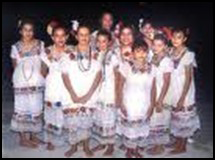
1. – Cassava root or Yucca.
2. – Colander.
3. – Grater.
4. – A Skillet.




Let´s start it:
Step 1: We got to peel off the skin of the cassava and then we are going to pass the cassava root trough the first side showed on our grater picture.
Step 2: Now we will use our colander, to drain all the natural water that the cassava contains; put the cassava inside it and leave it on it a time, until you see that is dry or almost dry.
Step 3: Use a skillet of your selection and leave it on the stove a time, waiting to heat it up. Then put your cassava inside the heated skillet, we are not going to use oil or anything else; it won’t stick, just smooth the cassava using a spoon or the same spatula and give it the shape you want. When you think that one side is ready, flip it over to the other side with a spatula. It will be ready when you see that it´s color is turning brown then remove it from the skillet. Experiment with different shapes, thickness, thinness, as shall the brown that you prefer.
Step 4: Finally you can enjoy your delicious cassava bread!!! You can add to it butter, honey, cheese or anything that you can imagine =)
And this is it, now you can surprise to your friends or family making cassava bread.












